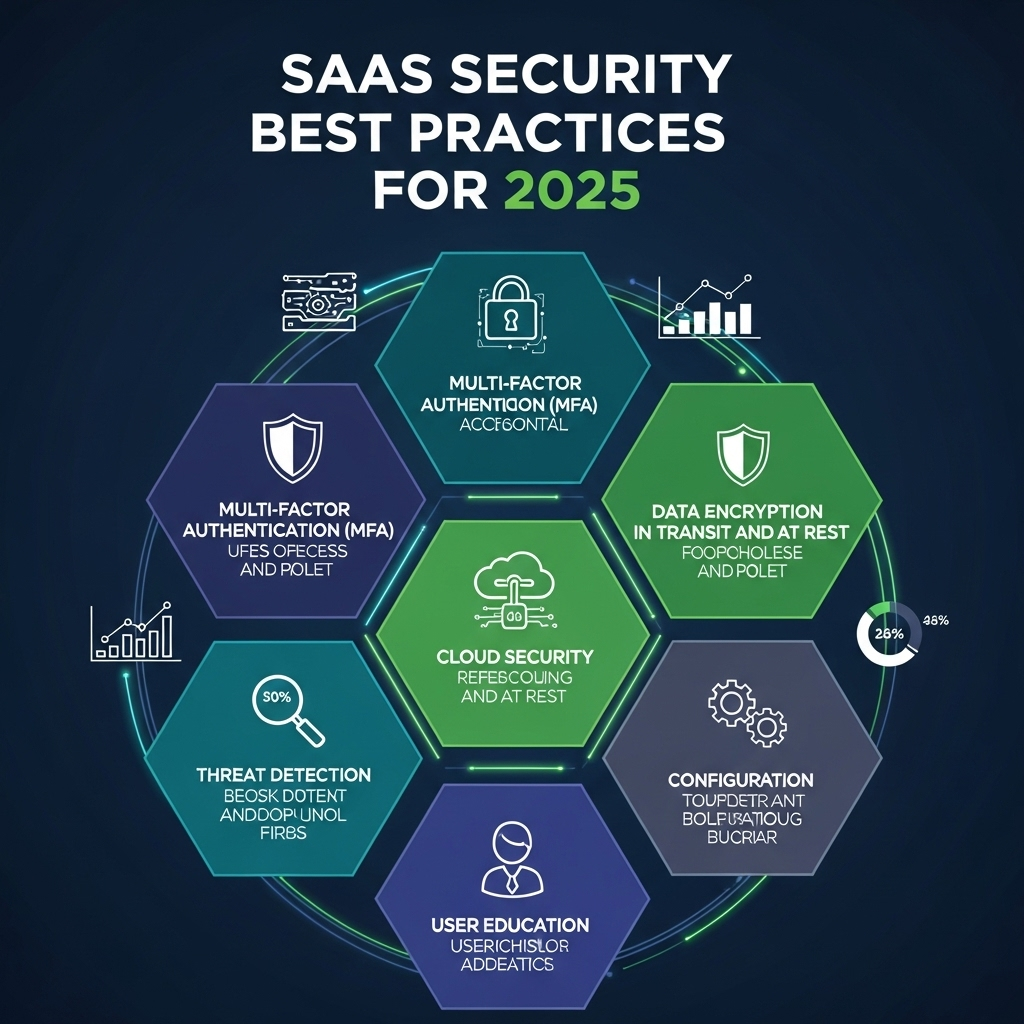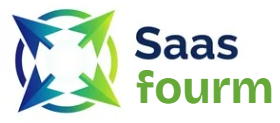By 2025, global SaaS spending is projected to exceed $295 billion, according to Statista, representing an unprecedented digital transformation across every industry vertical. Yet, as organizations rapidly adopt cloud-based solutions to streamline operations, a parallel acceleration in sophisticated SaaS-related security threats has emerged as a silent crisis. Recent breaches have demonstrated how compromised SaaS ecosystems can expose sensitive AI interactions—without ever directly attacking the AI tools themselves—through vulnerabilities in identity layers powering daily applications like ChatGPT Enterprise and Microsoft Copilot. As a SaaS security specialist with over a decade of experience securing cloud environments for Fortune 500 companies, I’ve witnessed this paradigm shift firsthand: SaaS is no longer just a tool category but the digital nervous system of modern business. This guide delivers actionable, forward-looking security practices specifically engineered for the evolving threatscape of 2025, where 73% of data breaches now originate through unprotected SaaS applications.

Why SaaS Security Is More Critical Than Ever in 2025
The explosive growth of SaaS adoption has fundamentally reshaped enterprise infrastructure, creating complex interconnected ecosystems where a single vulnerability can cascade across multiple platforms. Consider the early 2025 incident where attackers exploited a legacy Oracle cloud server still connected to live identity infrastructure, compromising federated SSO credentials tied to active systems. As rishabhsoft.com reported, Oracle dismissed the issue as “old news,” but their customers faced devastating consequences when attackers gained access to sensitive AI interactions across ChatGPT Enterprise, Microsoft Copilot, and Notion AI.
For US businesses operating under stringent compliance frameworks like CCPA, HIPAA, and GLBA, the financial and reputational stakes have never been higher. Startups risk complete operational collapse from a single breach, while established enterprises face erosion of hard-earned customer trust that can take years to rebuild. The upvoty.com analysis confirms that cybercriminals now deliberately target smaller organizations, recognizing they often lack the security maturity of larger enterprises while maintaining valuable data connections.
Pro Tip: Conduct quarterly “SaaS archaeology” sessions to identify legacy systems still connected to your live infrastructure. Many breaches originate from forgotten integrations that security teams no longer actively monitor.
The 7 Essential SaaS Security Best Practices for 2025
1. Implement Comprehensive SaaS Security Posture Management (SSPM)
SSPM has emerged as the cornerstone of modern SaaS security strategies, providing visibility across your entire SaaS ecosystem to identify misconfigurations, unauthorized access, and policy violations. Unlike traditional security tools designed for perimeter defense, SSPM solutions actively monitor configuration settings across platforms like Salesforce, Microsoft 365, and Slack, alerting security teams to risky permissions before attackers can exploit them.
Implementation requires:
- Continuous discovery of all SaaS applications across your organization
- Automated configuration scanning against industry benchmarks
- Real-time alerting for high-risk permission changes
- Integration with your SIEM and IT service management tools
As devx.com emphasizes, “Safeguarding SaaS systems requires a proactive strategy, combining cutting-edge technology with best practices founded in industry norms.” The most advanced SSPM platforms now incorporate AI-driven risk scoring that prioritizes remediation efforts based on actual business impact rather than generic severity metrics.
| SSPM Capability | 2024 Standard | 2025 Requirement |
|---|---|---|
| Application Discovery | Manual inventory | AI-powered continuous discovery |
| Configuration Monitoring | Monthly scans | Real-time monitoring |
| Permission Analysis | Role-based checks | Behavior-based anomaly detection |
| Integration Depth | Basic API connections | Full workflow context awareness |
2. Enforce Strict Identity and Access Governance
The 2025 threat landscape has made clear that identity is the new perimeter. Modern attacks frequently originate from compromised credentials or excessive permissions rather than network vulnerabilities. Your identity management strategy must evolve beyond basic single sign-on to incorporate context-aware access policies that continuously evaluate risk factors including:
- Device security posture
- Geographic location anomalies
- Behavioral patterns
- Time-based access restrictions
Pro Tip: Implement time-bound access for third-party vendors and contractors. Instead of permanent access, use identity platforms that automatically revoke permissions after specific timeframes or upon task completion.
3. Establish Robust Data Protection Frameworks
Data protection in SaaS environments requires specialized approaches distinct from traditional data security. You need granular controls at multiple levels:
- At-rest protection: Encryption of stored data with customer-controlled keys
- In-transit security: Strict TLS enforcement and certificate pinning
- In-use controls: Granular data access policies and redaction rules
- Egress monitoring: Real-time scanning of data exports and downloads
The cloudeagle.ai study reveals that unmanaged data flows between connected SaaS applications represent one of the fastest-growing attack vectors. Implement DLP (Data Loss Prevention) policies specifically designed for SaaS-to-SaaS data transfers, not just traditional network boundaries.
4. Adopt Zero Trust Architecture Principles
Zero Trust is no longer a theoretical framework but a operational necessity for SaaS security in 2025. The foundational principle—”never trust, always verify”—must be implemented through technical controls rather than policy statements alone. Key implementation steps include:
- Segment your SaaS ecosystem using micro-perimeters around critical data assets
- Require continuous validation for every access request, not just initial authentication
- Implement strict least-privilege access at the functional level (not just role level)
- Deploy behavioral analytics to identify anomalous activity patterns
“Modern SaaS stack demands precise monitoring and access governance. Each unmanaged app is a potential vulnerability that can compromise your entire SaaS portfolio.” — cloudeagle.ai
5. Secure Application Integrations with API Governance
The web of integrations connecting your SaaS applications represents both tremendous business value and significant security risk. Product teams often enable integrations with minimal security review, creating what security researchers call “API supply chain vulnerabilities.” To mitigate this:
- Maintain a central registry of all approved integrations
- Enforce scope-limited OAuth permissions (not “full access” tokens)
- Monitor API call patterns for abnormal behavior
- Implement automatic revocation of unused integration tokens
The Oracle incident discussed in rishabhsoft.com exemplifies how integrations with legacy systems can compromise modern AI tools through shared identity layers.
6. Continuous Configuration Monitoring and Remediation
SaaS configurations are notoriously ephemeral—what’s secure today may become vulnerable tomorrow through user actions or platform updates. Implement automated systems that:
- Track configuration changes in real-time
- Correlate changes with user context and risk factors
- Automatically remediate high-risk misconfigurations
- Provide version history with rollback capabilities
The most effective approaches tie configuration monitoring directly to user behavior analytics, detecting when configuration changes coincide with suspicious activity patterns.
7. Execute Regular Security Audits with SaaS-Specific Focus
Traditional security audits often miss critical SaaS vulnerabilities because they focus on network infrastructure rather than application-layer risks. 2025 requires specialized SaaS security audits examining:
- Permission inheritance across connected applications
- Data flow paths between integrated services
- Custom code security within SaaS platforms
- Third-party app security posture within your ecosystem
Pro Tip: Schedule surprise “configuration freeze” periods where no changes to critical SaaS settings are permitted, allowing your security team to conduct thorough baseline assessments.
Building Your SaaS Security Roadmap for 2025
Transitioning from reactive security to proactive SaaS protection requires strategic planning. Begin by conducting a comprehensive SaaS inventory audit—you likely have 30-50% more applications in use than officially sanctioned. Classify these applications based on:
- Criticality: How essential is this application to core business functions?
- Sensitivity: What types of data does this application process/store?
- Connectivity: How many other systems does this application connect to?
Prioritize security efforts on applications meeting two or more “high” criteria in this classification system. The docontrol.io framework recommends adopting a phased approach:
- Assessment phase: 4-6 weeks to map your complete SaaS ecosystem
- Hardening phase: 8-12 weeks implementing baseline security controls
- Automation phase: Ongoing refinement of automated security processes
- Maturity phase: Continuous improvement of security posture
Track progress using metrics like mean time to detect (MTTD) SaaS misconfigurations, percentage of high-risk permissions reduced, and time to remediate critical vulnerabilities. These operational metrics provide more actionable insights than traditional compliance checklists.
Common SaaS Security Pitfalls to Avoid in 2025
Overlooking Legacy Integrations
One of the most dangerous blind spots is legacy systems that maintain connections to modern SaaS platforms. As demonstrated by the Oracle incident early in 2025, servers decommissioned from primary use but still connected to identity infrastructure create perfect attack vectors. Implement quarterly reviews of integration histories, not just current connections.
Underestimating AI Tool Security
The convergence of SaaS and AI has created unprecedented security challenges. When attackers compromise the identity layer powering AI tools, they can view sensitive prompts, data inputs, and AI-generated outputs without directly accessing the AI service. The rishabhsoft.com analysis confirms this represents one of 2025’s fastest-growing attack vectors.
Complacency with Established Vendors
Many security teams operate under the false assumption that major SaaS providers inherently secure customer data. While platform security is robust, configuration security remains the customer’s responsibility. The shared responsibility model requires organizations to actively manage their portion of the security equation.
“SaaS security refers to the comprehensive protection of data, users, configurations, access, and integrations within cloud-based software applications. It includes the strategies, technologies, and policies that safeguard SaaS environments from unauthorized access, misuse, data loss, and cyber threats.” — docontrol.io
Conclusion
As we navigate the increasingly complex SaaS landscape of 2025, security can no longer be an afterthought—it must be embedded in your SaaS adoption lifecycle from the initial vendor evaluation through ongoing usage. The financial and reputational costs of breaches have risen to existential levels for many organizations, making proactive security posture management non-negotiable. By implementing these seven best practices with discipline and leveraging modern SSPM tools, US businesses can confidently harness the power of SaaS while minimizing risk. Remember: in today’s interconnected cloud ecosystem, your weakest SaaS link determines your overall security strength. Start strengthening those links today—before attackers find them first.
